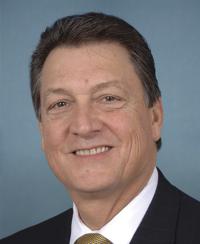SMART is committed to keeping members informed about actions that impact our jobs, livelihoods and families. The SMART Governmental Affairs and Communications Departments are tracking executive actions that affect members — positively and negatively — and will continue to do so moving forward. This list was last updated April 10, 2025.
Pro-worker actions:
- President Trump nominated former Oregon Republican Rep. Lori Chavez-DeRemer as secretary of the Department of Labor. Chavez-DeRemer built a pro-worker record in Congress, voting for bipartisan legislation like the Protecting the Right to Organize (PRO) Act and National Apprenticeship Act. Chavez-DeRemer was confirmed to lead the DOL in March.
Anti-worker actions:
- President Trump fired National Labor Relations Board General Counsel Jennifer Abruzzo and board member Gwynne Wilcox. These firings cast out a pro-worker champion at the NLRB who advanced SMART members’ rights (banning captive audience meetings, for example) and made it so the NLRB couldn’t meet to oversee union organizing elections or hear cases about employers breaking the law.
- President Trump canceled government support for wind energy projects, putting construction on hold and forcing contractors and local unions to look elsewhere for work.
- Trump’s Environmental Protection Agency has canceled $20 billion in loans for building retrofits and other energy efficiency projects that would create good jobs for SMART members.
- President Trump revoked an executive order that implemented the Inflation Reduction Act and directed federal agencies to focus on creating good-paying union jobs. To date, the labor standards in the Inflation Reduction Act have created thousands of jobs, with projects paying prevailing wages and providing opportunities for hundreds of SMART apprentices.
- President Trump revoked an executive order implementing the Bipartisan Infrastructure Law; the order had prioritized creating jobs with high labor standards where workers have the chance to join a union.
- President Trump revoked an executive order that implemented the Inflation Reduction Act provisions on Medicare negotiation of lower drug prices.
- President Trump and Elon Musk’s Department of Government Efficiency (DOGE) fired thousands of federal workers who provide needed healthcare to veterans and ensure seniors receive the Social Security payments they earned.
- President Trump issued an executive order directing agencies to disapprove finalized union contracts signed within the last 30 days of the Biden administration.
- The Trump administration’s Federal Railroad Administration granted 22 waivers to Genesee & Wyoming Railroad subsidiaries, including the Heart of Georgia Railroad and Georgia Central Railway, to begin testing autonomous freight rail cars — despite SMART-TD raising concerns about safety (prototypes failed several critical safety tests) and members’ job security.
- The Trump administration’s Office of Management and Budget Director Russell Vought is currently trying to shut down the Consumer Finance Protection Bureau, a law enforcement agency formed after the 2008 financial crisis to protect American consumers from financial institutions allegedly practicing dishonest or illegal activity. The CFPB has returned over $13 billion to millions of Americans who have fallen prey to financial scams.
- The Trump administration’s Department of Defense ended the use of project labor agreements on “large-scale construction projects,” taking away work from union members and signatory contractors.
- The Trump administration’s then NLRB Acting General Counsel William Cowen made captive audience meetings, a key tactic for bosses looking to scare workers into voting against a union, legal again after they had been banned by the previous NLRB general counsel.
- President Trump, in a joint address to Congress, called for the cancellation of the CHIPS Act, which is creating thousands of jobs for SMART members on semiconductor manufacturing projects from Arizona to Vermont.
- President Trump’s Department of Homeland Security canceled the collective bargaining agreement between the Transportation Security Agency and TSA officers, leaving 47,000 TSA officers without representation.
- The Trump administration’s Department of Education fired half of its staff, including those in charge of workforce development programs that direct students into the trades. These cuts will make it harder for children with disabilities to get the education they deserve. President Trump later signed an executive order directing Education Secretary Linda McMahon to dismantle the department.
- President Trump and Elon Musk’s DOGE announced the closure of Railroad Retirement Board field offices across the country, compounding the already unacceptable delays and wait times rail workers experience when attempting to contact or get information from the RRB. Additionally, President Trump’s executive orders made it so the RRB can only hire one employee for every four who leave, adding onto the capacity issues the under-funded board already faces.
- President Trump repealed previous executive orders that promote registered apprenticeships on infrastructure projects, handing an early win to nonunion contractors. The Trump White House said the order, which leveled the playing field for SMART contractors and apprentices, was “forcing radical labor policies and apprenticeship mandates onto American businesses and government agencies.”
- President Trump picked Crystal Carey, a lawyer at the notorious union-busting law firm Morgan Lewis, to head the National Labor Relations Board. Carey’s biggest recent client was Amazon.
- As part of the U.S. Housing and Urban Development Department’s DOGE-directed downsizing, HUD is closing the Office of Field Policy and Management, which enforces prevailing wage and anti-discrimination laws that protect SMART construction workers; 150 field staff have been let go as of Friday, March 21.
- Following the directions of President Trump, DOGE moved to dismantle the Federal Mediation and Conciliation Service, a small agency that supports unions and employers throughout the collective bargaining process and helps to resolve work stoppages. The kneecapping of the FMCS, which makes up 0.0014% of the U.S. budget, could result in longer work stoppages, prolonged contract negotiations and more.
- President Trump issued an executive order that stripped union rights and collective bargaining from more than 700,000 federal workers, including those who take care of veterans and work in border security, among many others. This undermines the bedrock principles of collective bargaining our nation was founded on, and that SMART members rely on when bargaining every union contract.
- Trump Energy Secretary Chris Wright directed the National Laboratory Operations Board to “assess the benefits and risks of removing construction labor agreement provisions from National Laboratory contracts” — a clear step away from decades of project labor agreements that benefit SMART members on National Laboratory work.

